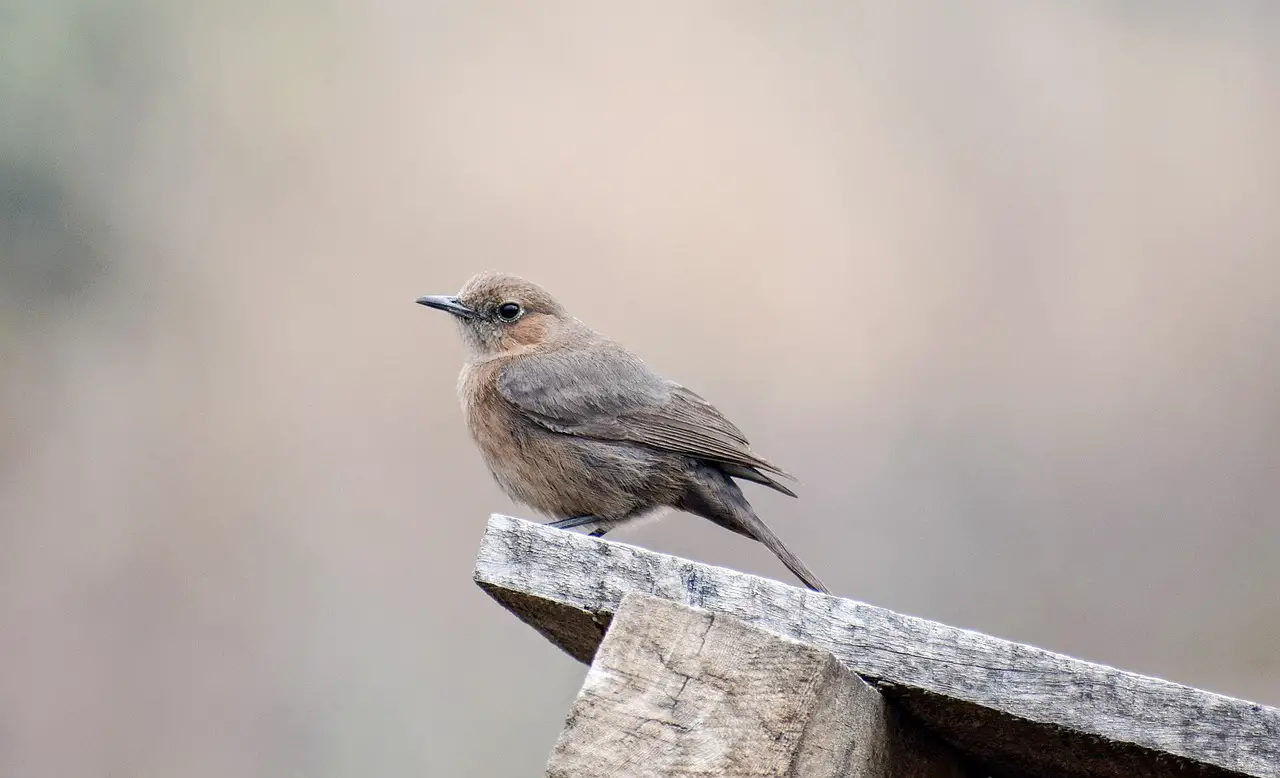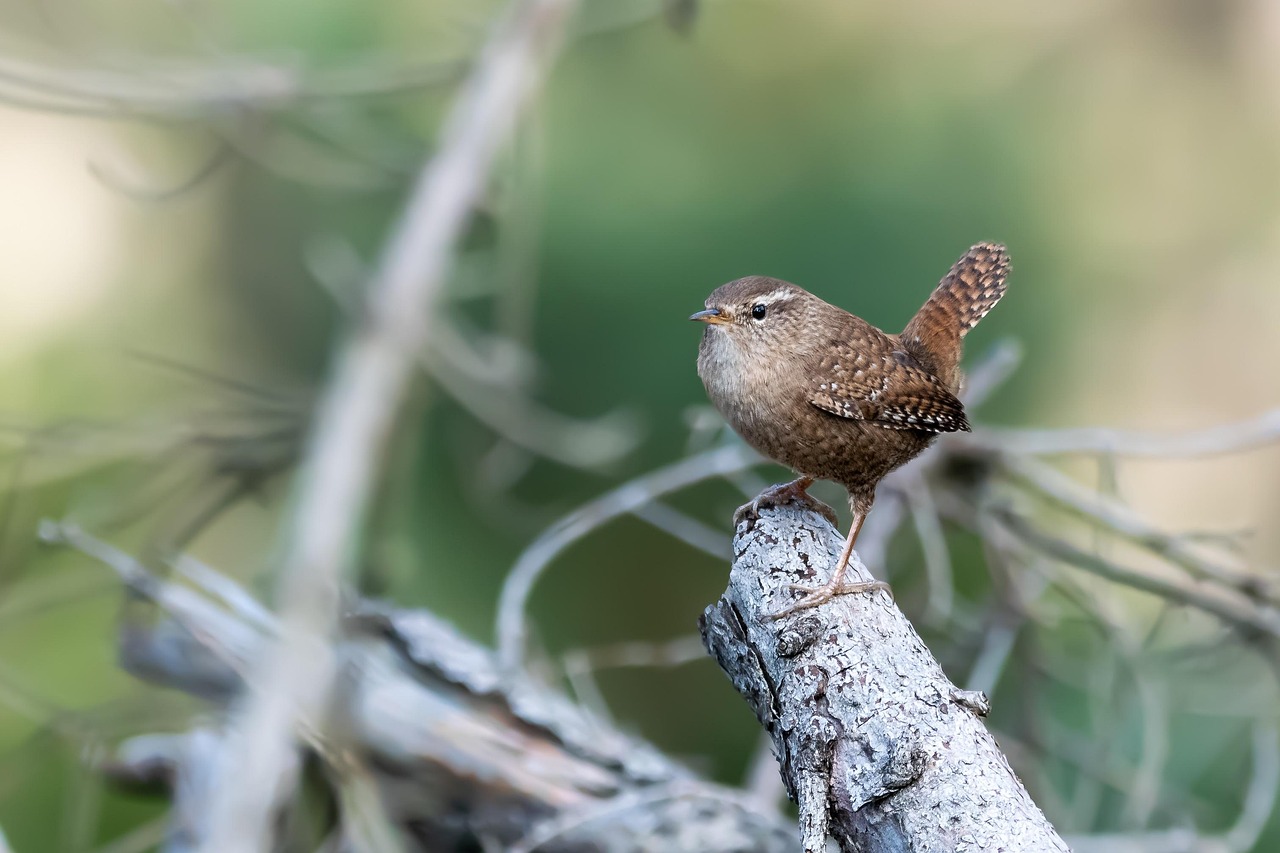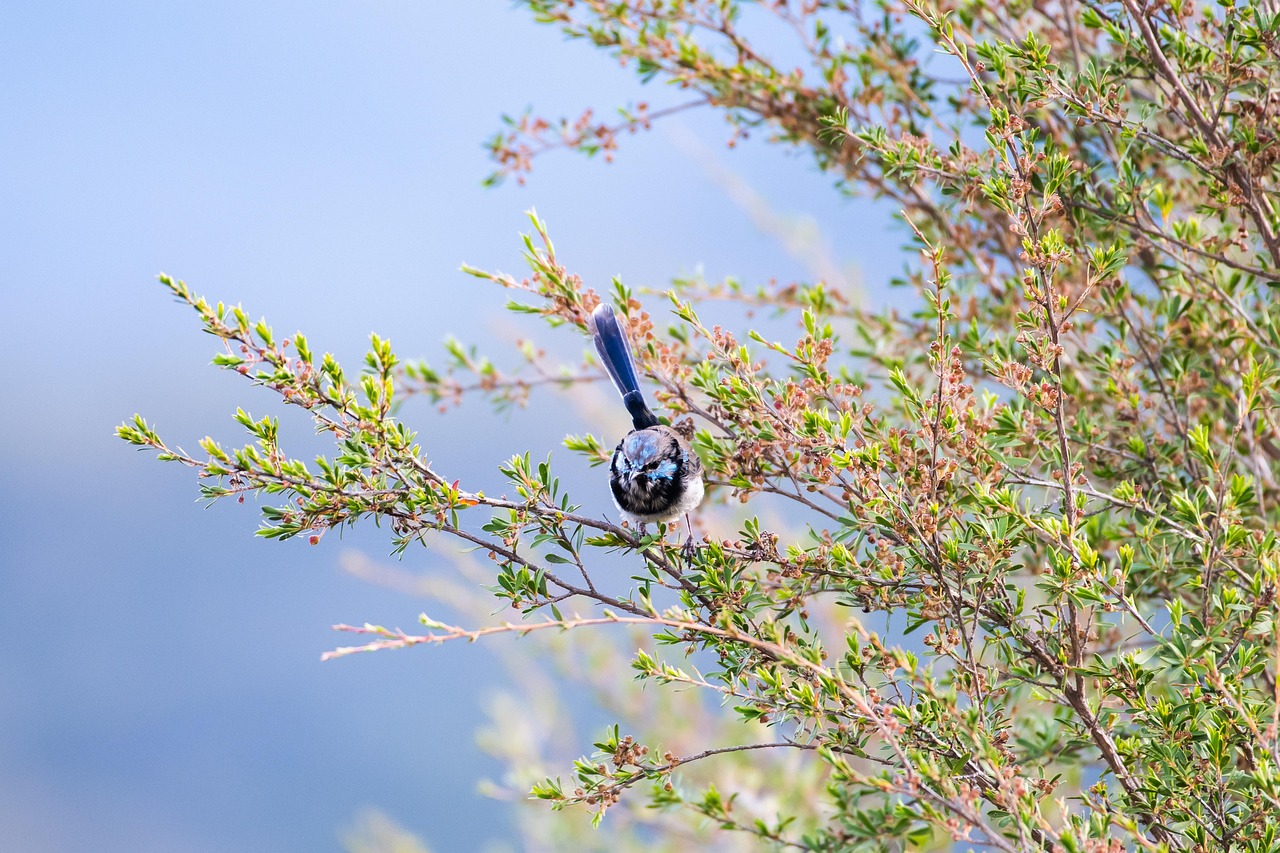Wrens exhibit distinct sleeping habits, often roosting in dense vegetation or sheltered areas. They prefer to find secure spots, such as shrubs or tree hollows, to protect themselves from predators during the night. Their behavior is characterized by communal roosting in colder months, which helps them conserve heat.
Wrens are small, energetic birds known for their lively behavior and melodious songs. With over 80 species worldwide, they adapt to various habitats, including forests, grasslands, and urban areas. Understanding their sleeping habits and roosting locations is crucial for appreciating their role in the ecosystem and ensuring their conservation. These birds exhibit unique behaviors that reflect their adaptability and social structure.
Throughout the day, wrens are highly active, foraging for insects, seeds, and berries. However, as night falls, they seek refuge to rest and avoid nighttime predators. Their choice of roosting sites is influenced by several factors, including safety from predators, availability of food, and environmental conditions.
Sleeping Habits of Wrens

Wrens typically follow a consistent routine when it comes to sleeping. As dusk approaches, they begin to prepare for the night. They often engage in pre-roosting activities, such as foraging for food to ensure they have enough energy stored for the night. This behavior is especially important during colder months when food can be scarce.
One notable aspect of wrens’ sleeping habits is their tendency to roost communally. In colder climates, multiple wrens may gather in a single roosting location. This communal behavior serves a dual purpose: it allows for warmth and provides safety in numbers. By huddling together, they reduce heat loss and increase their chances of surviving the night without facing predation.
Preferred Roosting Locations
Wrens are versatile in their choice of roosting locations. They prefer dense foliage that offers cover from predators and harsh weather conditions. Common roosting sites include:
- Thickets and dense shrubs
- Tree cavities or hollows
- Under eaves of buildings or decks
- Brush piles or piles of leaves
- Dense ground cover like ivy or ferns
This adaptability allows wrens to thrive in various environments, whether in natural habitats or urban settings. They are known to utilize man-made structures as roosting sites when natural options are limited.
Behavior During Roosting
When wrens settle down for the night, they exhibit specific behaviors that help them maximize safety and comfort. They often choose low-lying areas that are less exposed to predators. Wrens are also known to enter their chosen roosts early in the evening and may remain silent to avoid detection.
Their sleeping positions are often curled up with their heads tucked under their wings. This position not only helps conserve body heat but also protects their delicate facial features from the chill of the night air. Additionally, wrens may engage in preening before roosting, ensuring their feathers are clean and insulated for warmth.
| Roosting Site | Description |
|---|---|
| Shrubs | Dense vegetation providing cover from predators. |
| Cavities | Natural or artificial hollows offering protection. |
| Buildings | Utilization of eaves or decks in urban settings. |
| Brush Piles | Piles of leaves or debris used for shelter. |
| Ground Cover | Dense covers like ivy providing safety. |
Understanding these behaviors and preferences can help bird watchers better appreciate wrens’ lifestyles. Observing them during their active hours adds depth to our knowledge of their nightly routines and ecological roles.
Factors Influencing Roosting Behavior
Several factors influence the roosting behavior of wrens. Understanding these aspects can provide deeper insights into their lifestyle and survival strategies. The primary factors include environmental conditions, predator presence, and social behaviors.
Environmental Conditions
The environment plays a crucial role in determining where wrens choose to roost. Key environmental considerations include:
- Temperature: Wrens seek warmer locations during colder months. They may roost in sheltered areas that retain heat.
- Weather: Rain, wind, and snow can influence their choice of roosting sites. Wrens prefer locations that offer protection from harsh weather.
- Food Availability: Areas with abundant food sources may attract wrens and influence their roosting choices.
These environmental factors require wrens to adapt their roosting habits based on seasonal changes and local conditions.
Predator Presence
Predators are a significant concern for wrens, particularly during the night when they are most vulnerable. Their choice of roosting locations is heavily influenced by the presence of potential threats. Some strategies they employ include:
- Choosing Concealed Sites: Wrens often select dense shrubs or tree branches that provide cover from predators like hawks and snakes.
- Height: Roosting higher up in trees can help them avoid ground predators.
- Community Roosting: By roosting in groups, wrens can increase their vigilance against predators, as more eyes can help spot danger.
This awareness of predators shapes their behavior and affects their overall survival rates.
Social Structure and Roosting Behavior
Wren species exhibit various social behaviors, particularly during the roosting period. Their social structure can significantly affect how they interact with each other during the night.
Communal Roosting
During colder months, many wren species engage in communal roosting. This behavior can be attributed to several reasons:
- Heat Conservation: By huddling together, wrens can share body warmth, reducing overall energy expenditure.
- Safety in Numbers: Roosting in groups can deter predators, as it is more challenging for a predator to target multiple birds than a single one.
- Social Interactions: Communal roosting allows for social bonding and communication among individuals, strengthening group dynamics.
This social behavior is particularly evident in species like the House Wren, which often shares roosting sites with others of its kind.
Hierarchical Behavior
A hierarchy may develop within roosting groups. Dominant individuals may secure the best roosting spots, while subordinate birds may have to settle for less desirable locations. This hierarchy can impact access to resources and overall fitness. Factors influencing hierarchy include:
- Aggression: More dominant birds may display aggressive behaviors to maintain their preferred positions.
- Age and Experience: Older, more experienced wrens often assert dominance over younger individuals.
- Territoriality: Some species may exhibit territorial behaviors during the day, impacting their interactions at night.
This hierarchical structure reflects the complexity of wren social dynamics and influences their roosting choices.
Seasonal Variations in Roosting Behavior
The roosting habits of wrens can change significantly with the seasons. These variations are crucial for adapting to environmental conditions throughout the year.
Winter Roosting
During winter, wrens face harsher conditions that influence their roosting behavior. They often engage in communal roosting to share warmth and increase safety. Common adaptations include:
- Increased Group Size: More wrens may gather in communal sites to conserve heat.
- Sheltered Locations: Preference for dense vegetation that provides insulation from cold temperatures.
- Consistent Roosting Sites: Returning to the same site each night for familiarity and safety.
Summer Roosting
In contrast, summer brings different challenges and opportunities. As food becomes more abundant, wrens may spread out more when roosting. Characteristics of summer roosting include:

- Diverse Roosting Locations: Wrens may choose various sites based on food availability and safety.
- Lesser Communal Behavior: Individual or smaller groups may roost separately as temperatures are milder.
- Increased Activity: Wrens remain active longer during the evening, sometimes delaying their return to roosts.
This adaptability highlights the resilience of wrens in responding to seasonal changes while ensuring their survival and well-being.
Impact of Human Activity on Wren Roosting
Human activity significantly affects the habitats and roosting behaviors of wrens. Urbanization, agriculture, and land development can lead to changes in the environment that impact their survival. Understanding these impacts can help in creating effective conservation strategies.
Urbanization and Habitat Loss
As cities expand, natural habitats for wrens are often destroyed or altered. This urbanization leads to several challenges:
- Loss of Natural Cover: Dense vegetation is often removed to make way for buildings and roads, reducing the available roosting sites for wrens.
- Fragmentation: Urban development can fragment habitats, isolating populations and making it difficult for wrens to find suitable roosting sites.
- Increased Pollution: Urban areas may have higher levels of pollution, which can affect food sources and overall bird health.
These factors can force wrens to adapt to new environments, sometimes leading to increased competition for limited resources.
Agricultural Practices
Agriculture also influences wren habitats. Farming practices can either benefit or hinder wren populations:
- Pesticides: The use of pesticides can reduce insect populations, leading to food shortages for wrens.
- Crop Monocultures: Large fields of a single crop type provide less habitat diversity, which may limit the availability of suitable roosting sites.
- Field Margins: Maintaining natural field margins with shrubs and hedges can provide crucial roosting habitats for wrens.
Implementing bird-friendly farming practices can help mitigate some negative impacts on wren populations.
Conservation Efforts for Wren Habitats

Given the various challenges posed by human activity, several conservation efforts aim to protect and enhance wren habitats. These initiatives focus on restoring natural environments and creating safe spaces for these birds.
Creating Wildlife Corridors
Wildlife corridors are essential for maintaining connectivity between fragmented habitats. These corridors allow wrens to move freely between different areas, facilitating access to food and roosting sites. Key aspects of wildlife corridors include:
- Planting Native Vegetation: Restoring native plants can provide essential cover and food sources for wrens.
- Reducing Barriers: Minimizing fences and other barriers can help wrens navigate their environment more easily.
- Collaboration with Local Communities: Engaging local residents in conservation efforts can increase awareness and support for wildlife corridors.
Habitat Restoration Projects
Many organizations focus on restoring degraded habitats that support wren populations. These projects often involve:
- Reforestation: Planting trees and shrubs in areas where natural vegetation has been lost enhances habitat quality.
- Wetland Restoration: Reviving wetlands can create rich ecosystems that attract various bird species, including wrens.
- Monitoring Programs: Tracking wren populations helps assess the effectiveness of restoration efforts and guides future actions.
Such initiatives play a vital role in ensuring that wrens have access to safe roosting locations and abundant food sources.
Engaging the Public in Wren Conservation
Public involvement is crucial for successful conservation efforts. Raising awareness about wren habitats and their importance can lead to positive changes in local communities. Engaging the public can take various forms:
Educational Programs
Offering educational programs about wrens and their ecosystems can foster appreciation and understanding among community members. These programs may include:
- Workshops: Hosting workshops focused on birdwatching and habitat preservation.
- School Programs: Incorporating wren-related topics into school curriculums to educate children about local wildlife.
- Community Events: Organizing events like bird counts or habitat clean-up days to involve community members directly.
Citizen Science Initiatives
Citizen science projects encourage individuals to contribute data on wren populations and their behaviors. Examples include:
- Birdwatching Surveys: Community members can participate in surveys to track wren sightings and nesting behavior.
- Nesting Box Monitoring: Engaging locals to monitor artificial nesting boxes can help researchers understand wren populations better.
- Reporting Observations: Creating platforms for citizens to report their observations fosters a sense of involvement and responsibility towards local wildlife.
These initiatives not only empower individuals but also contribute valuable data for research and conservation efforts, ultimately benefiting wren populations and their habitats.
Challenges Facing Wren Populations

Despite various conservation efforts, wrens continue to face significant challenges that threaten their populations. By understanding these challenges, we can better appreciate the importance of ongoing conservation work.
Climate Change
Climate change poses a substantial threat to wren habitats. Changes in temperature, precipitation patterns, and extreme weather events can disrupt their ecosystems. Some key impacts of climate change on wrens include:
- Altering Food Availability: Changes in insect populations due to temperature shifts can affect the food supply for wrens, leading to potential starvation.
- Habitat Loss: Rising sea levels and changing weather patterns can result in habitat degradation, particularly in coastal areas where some wren species reside.
- Migration Patterns: Climate change may alter migration patterns, making it difficult for wrens to find suitable roosting sites.
Invasive Species
Invasive species can also threaten native wren populations. These non-native species may compete for resources or introduce diseases. The impacts include:
- Resource Competition: Invasive birds and mammals may compete with wrens for food and nesting sites, leading to population declines.
- Predation: Predators like cats and rats can significantly reduce wren numbers by preying on eggs and young birds.
- Disease Transmission: Invasive species can carry diseases that affect native wildlife, further jeopardizing wren populations.
Importance of Public Awareness and Education
Raising awareness about the challenges wrens face is crucial for their conservation. Education plays a vital role in fostering a sense of responsibility toward wildlife. Initiatives aimed at increasing public understanding of wren ecology and conservation can include:
- Community Workshops: Hosting workshops that educate community members about the importance of native birds and their habitats.
- School Programs: Developing educational materials for schools to teach children about local wildlife and conservation practices.
- Social Media Campaigns: Utilizing social media platforms to reach a broader audience and spread awareness about wren conservation efforts.
By engaging the public, we can encourage more individuals to participate in conservation activities, contributing to the overall health of local ecosystems.
Final Thoughts
The sleeping habits, roosting locations, and behaviors of wrens reveal a great deal about their adaptability and resilience in changing environments. As small yet vital components of our ecosystems, these birds contribute significantly to biodiversity and ecological balance. Observing their behaviors not only enriches our understanding of nature but also highlights the interconnectedness of all species.
Conservation efforts aimed at protecting wrens and their habitats are crucial for their survival. By addressing the challenges posed by urbanization, climate change, and invasive species, we can create a more hospitable environment for these remarkable birds. Engaging communities through education and citizen science initiatives fosters a deeper appreciation for wrens and encourages collective action toward their conservation.
Ultimately, the future of wrens lies in our hands. By promoting sustainable practices, supporting conservation initiatives, and enhancing public awareness, we can ensure that wrens continue to thrive in our natural world. Every small effort counts towards preserving the delicate balance of our ecosystems and safeguarding these charming birds for generations to come.
